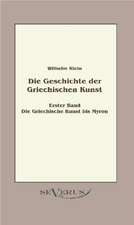Transculturation in British Art, 1770-1930: British Art: Global Contexts
Editat de JulieF. Codellen Limba Engleză Paperback – 31 mar 2017
| Toate formatele și edițiile | Preț | Express |
|---|---|---|
| Paperback (1) | 259.98 lei 6-8 săpt. | |
| Taylor & Francis – 31 mar 2017 | 259.98 lei 6-8 săpt. | |
| Hardback (1) | 1063.28 lei 6-8 săpt. | |
| Taylor & Francis – 28 iun 2012 | 1063.28 lei 6-8 săpt. |
Preț: 259.98 lei
Preț vechi: 326.55 lei
-20% Nou
Puncte Express: 390
Preț estimativ în valută:
49.75€ • 51.94$ • 41.17£
49.75€ • 51.94$ • 41.17£
Carte tipărită la comandă
Livrare economică 04-18 aprilie
Preluare comenzi: 021 569.72.76
Specificații
ISBN-13: 9781138268401
ISBN-10: 1138268402
Pagini: 314
Dimensiuni: 174 x 246 mm
Greutate: 0.45 kg
Ediția:1
Editura: Taylor & Francis
Colecția Routledge
Seria British Art: Global Contexts
Locul publicării:Oxford, United Kingdom
ISBN-10: 1138268402
Pagini: 314
Dimensiuni: 174 x 246 mm
Greutate: 0.45 kg
Ediția:1
Editura: Taylor & Francis
Colecția Routledge
Seria British Art: Global Contexts
Locul publicării:Oxford, United Kingdom
Cuprins
Contents: The art of transculturation, Julie F. Codell; Part I Art's Changing Publics and Politics: Transcultural Receptions: Baron of Bengal: Robert Clive and the birth of an imperial image, Romita Ray; Miniature paintings as transcultural objects? The John Norton and Peter Jones portraits, Kristina Huneault; The politics of transculturation: the life and art of John Frederick Lewis (1804-1876), Emily M. Weeks; The many shades of Shakespeare: representations of Othello and Desdemona in Victorian visual culture, Nancy Rose Marshall; 'Bronzed and muscular bodies': Jinrikishas, tattooed bodies and Yokohama tourist photography, Luke Gartlan; The camera and the contact zone: re-envisioning the representation of aboriginal women in the Canadian North, Susan Close; Te kai-hautu o te waka/ director of the canoe: the statue of Sir George Grey in Auckland, Mark Stocker; Ambivalent geographies: the British concession in Taijin, China, c.1860-1946, Dana Arnold. Part II When Art Moves and Multiplies: Transcultural Geographies: Divided objects of empires: Ottoman imperial portraiture and transcultural aesthetics, Mary Roberts; 'A voice from the Congo': Herbert Ward's sculptures in Europe and America, Kirsty Breedon; War and peace: Harry Bates's Lord Roberts memorial in London, Calcutta, and Glasgow, Jason Edwards; 'Wonderful pieces of stage management': reviewing masculine fashioning, race, and imperialism in John Singer Sargent's British portraits, c.1897-1914, Andrew Stephenson; Colonial nationalism and closer union: Hugh Lane in South Africa, Morna O'Neill; Bibliography; Index.
Notă biografică
Julie F. Codell is Professor of Art History at Arizona State University and Faculty Affiliate in Film and Media Studies, English, Gender and Women's Studies, and the Center for Asian Research.
Recenzii
'This book significantly advances the field of art and empire, our knowledge of imperial artists, and our sense of the visual as a key medium for understanding the meeting of cultures under asymmetrical relations of power.' Tim Barringer, Yale University, USA
'This edited volume reveals the vital contribution Victorian studies and art history can make to the study of transculturation ... Codell provides an insightful overview of the concept ...' Victorian Studies
'This edited volume reveals the vital contribution Victorian studies and art history can make to the study of transculturation ... Codell provides an insightful overview of the concept ...' Victorian Studies
Descriere
Examining painting, photography, illustration, sculpture and architecture from 1770 to 1930, authors explore art that shaped, negotiated, and represented transculturation in the British Empire and in countries under British colonial influences (Congo, Japan, and Turkey). Authors analyze works' cross-cultural meanings in two transcultural dimensions: changing interpretations of single works over time for colonial and postcolonial spectators, and across space in works' replications or multiples in both metropole and colonial spaces.























